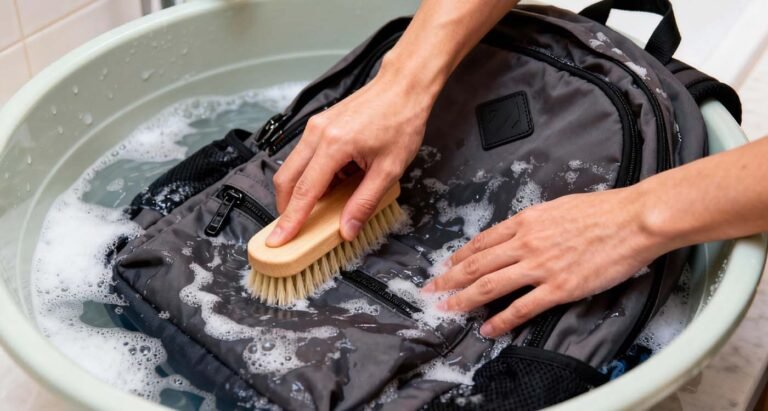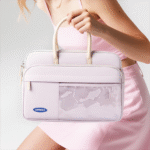0
What to Pack for a European Train Trip: Your Mobile Office Setup
Packing cue: Train travel lets you work with a view. Whether you’re a digital nomad hopping between capitals or a remote worker squeezing email time into scenic routes, trains in Europe often beat planes for productivity, comfort, and convenience. This guide — focused on train travel essentials in Europe — walks you through the gear, power hacks, comfort must-haves, and a sample “workation” spotlight (Swiss Glacier Express) so your cabin doubles as a mobile office.
Train perks: why rail beats planes for digital nomads
Trains give you uninterrupted workspace, room to spread out, and fewer security hassles than airports — many high-speed routes include seat power and onboard Wi-Fi so you can stay connected and productive en route. Eurostar, for example, provides free onboard Wi-Fi and seat power sockets on many services, allowing you to handle calls or sync files between London and Paris without having to hunt for coffee-shop Wi-Fi.
Beyond connectivity, long-distance European trains often have comfortable tables, dining cars or quiet zones, and city-center to city-center service that can be faster door-to-door than flying for some routes — which is why many remote workers favor rail for multi-city trips.
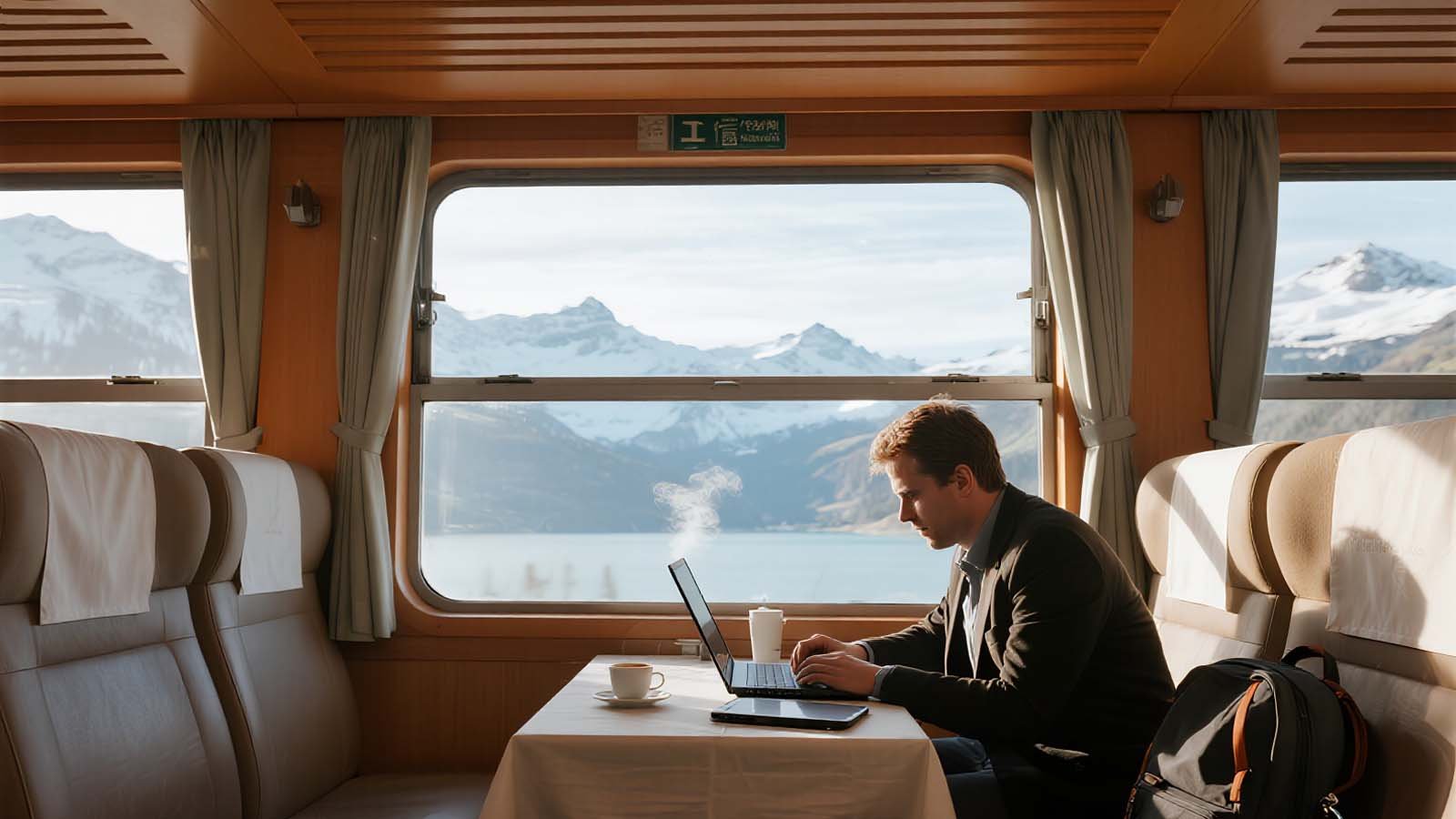
On-board essentials (what fits in your rail office)
Pack thoughtfully: you want everything you need for 4–8 hours of focused work without weighing you down.
- Compact power strip (one outlet → three devices). A tiny travel power strip or USB hub with multiple USB ports converts one seat outlet into charging for a laptop, tablet, and phone. Look for travel strips designed for portability and international voltage (see safety note below).
- Tablet + Bluetooth keyboard (lighter than a laptop). For email, documents, and light editing, a tablet + compact keyboard is faster to set up and lighter to carry than a full laptop.
- Laptop (if needed) — place in a padded sleeve inside your daypack/backpack for easy access at the seat or tables.
- Portable power bank (≤20,000 mAh recommended for easier airline acceptance later). Keep it in your carry-on at all times.
- Universal adapter with USB-C ports if you plan to plug into seat outlets across countries.
- Cable organizer/tech roll so chargers, dongles, and a travel mouse don’t tangle or vanish under seats.
- Noise-canceling headphones — more effective than earplugs for calls and focus. (Pro tip: pack wired option for planes/older train jack compatibility.)
- Reusable water bottle — cafes and on-board catering can charge several euros for bottled water; refill at stations or onboard taps where allowed, and you’ll save money and plastic. Community reports and station guides consistently note that bottled drinks can cost multiple euros at stations and onboard services.
Product tie-in: backpack with side charging port + luggage strap
If you want one item to transform a train seat into an office, choose a backpack with a side charging port and a built-in luggage strap. Look for:
- External USB charging port (connect your internal power bank) so you can charge your phone/tablet without opening the pack.
- TSA-style laptop compartment or a padded sleeve that opens quickly at seat/table level.
- Luggage strap on the back so you can slip the pack onto cabin luggage handles or secure it on train overhead racks and keep your hands free.
- Table-friendly layout with a flat surface or quick-access front pocket for mouse, notebook, and wallet.
- Anti-theft pockets and lockable zippers for peace of mind in crowded stations and dining cars.
This style of backpack turns a train seat into a neat, secure workstation and keeps cables tidy while you work.
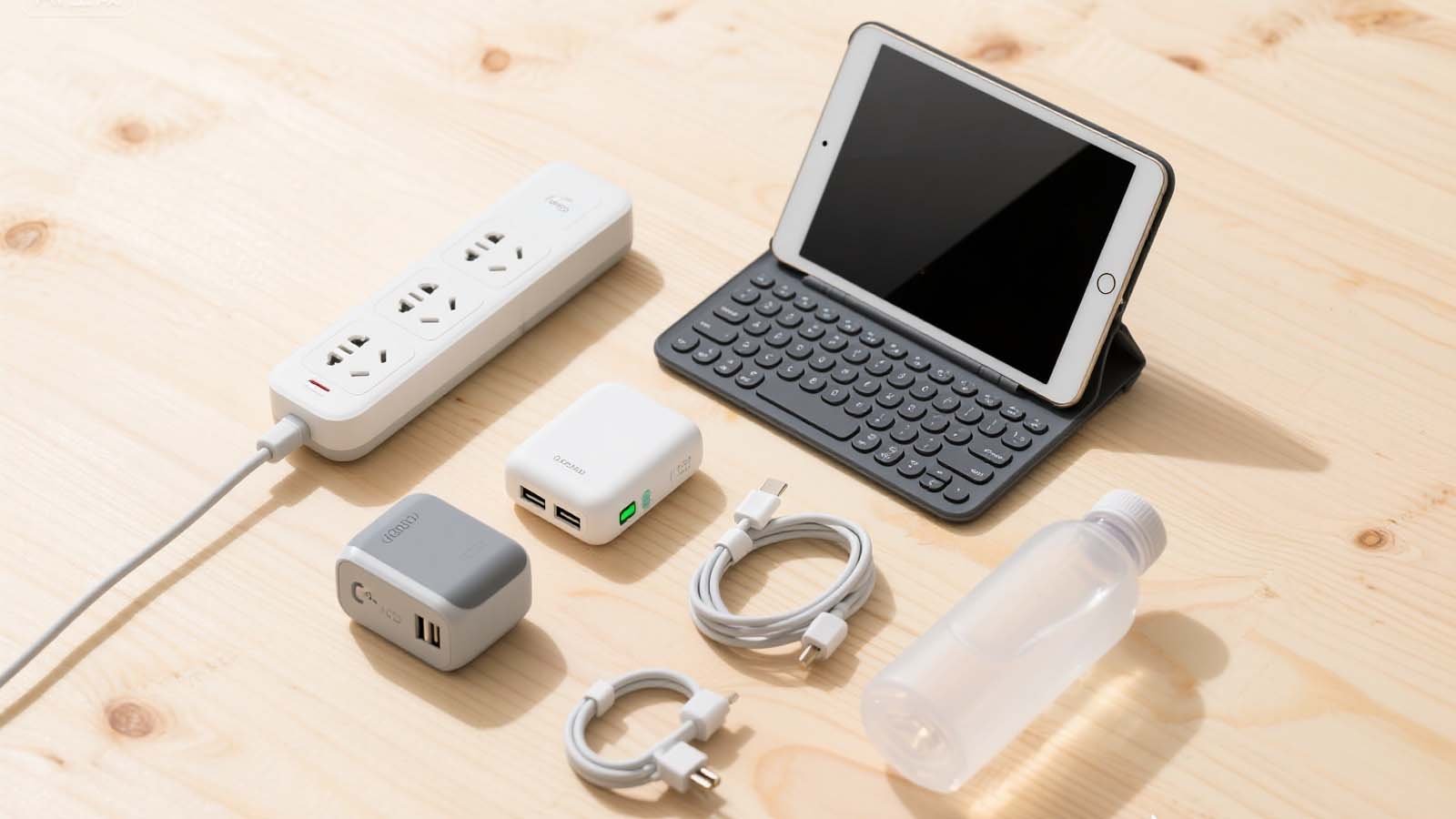
Comfort tips for long rides
- Noise-canceling headphones > earplugs. They let you hear calls clearly and drown out train noise so you can focus.
- Reusable bottle (save €€€). Small bottles or café prices on trains/stations can add up — a refillable bottle pays for itself quickly.
- Seat kit: compact neck pillow, eye mask, and a lightweight blanket or large scarf (multi-purpose: warmth, privacy, modesty in churches, or a temporary desk mat).
- Stretch and hydration: stand every 60–90 minutes; keep water handy.
- Snack pack: protein bars and nuts are cheaper and less noisy than tapping a snack from the café car repeatedly.
Safety and power etiquette
- Bring a travel power strip designed for travel (no surge protection if certain carriers require that; check local rules). Small travel strips or USB chargers are the safest bet — bulky home strips can be heavy and may not match train outlet spacing.
- Ask before you plug into a seat outlet if others are waiting; keep cords tidy and don’t hog tables.
- Avoid public USB charging kiosks (juice-jack risk) — use your power bank or your adapter with your cable.
- Secure your pack on racks with the luggage strap and keep valuables in anti-theft pockets while sleeping or in dining cars.

Data table: Traditional Plane Day vs Train Workday
| Feature | Plane (short hop) | Train (long-haul / high-speed) |
|---|---|---|
| Boarding & security time | Long (arrive early) | Short (arrive later, often city center) |
| Space to work | Very limited | Table seats, more legroom, move around |
| Wi-Fi reliability | Often no / expensive | Often free on many services (e.g., Eurostar) but variable; better for short stretches. |
| Power access | Limited (few seats) | Seat sockets common on high-speed trains |
| Cost (short routes) | Sometimes cheaper | Competitive, door-to-door often faster for city center travel |
| Overall productivity | Low | High (if Wi-Fi/seat available) |
(Notes: Wi-Fi quality varies by operator and route; some routes have excellent service, others drop in rural areas. See Eurostar’s free Wi-Fi pages and general rail analyses for details.)
Itinerary spotlight — Swiss Glacier Express Workation
Why it’s perfect: the Glacier Express is one of Europe’s most scenic slow-trains — panoramic windows, alpine views, and long stretches where you can lean into deep work with postcard scenery during breaks. Seat reservations are required; luggage racks and under-seat storage are available so your pack stays handy. Glacier Express also advertises onboard infotainment and Wi-Fi options in premium classes, making it doable as a relaxed, inspirational workation.
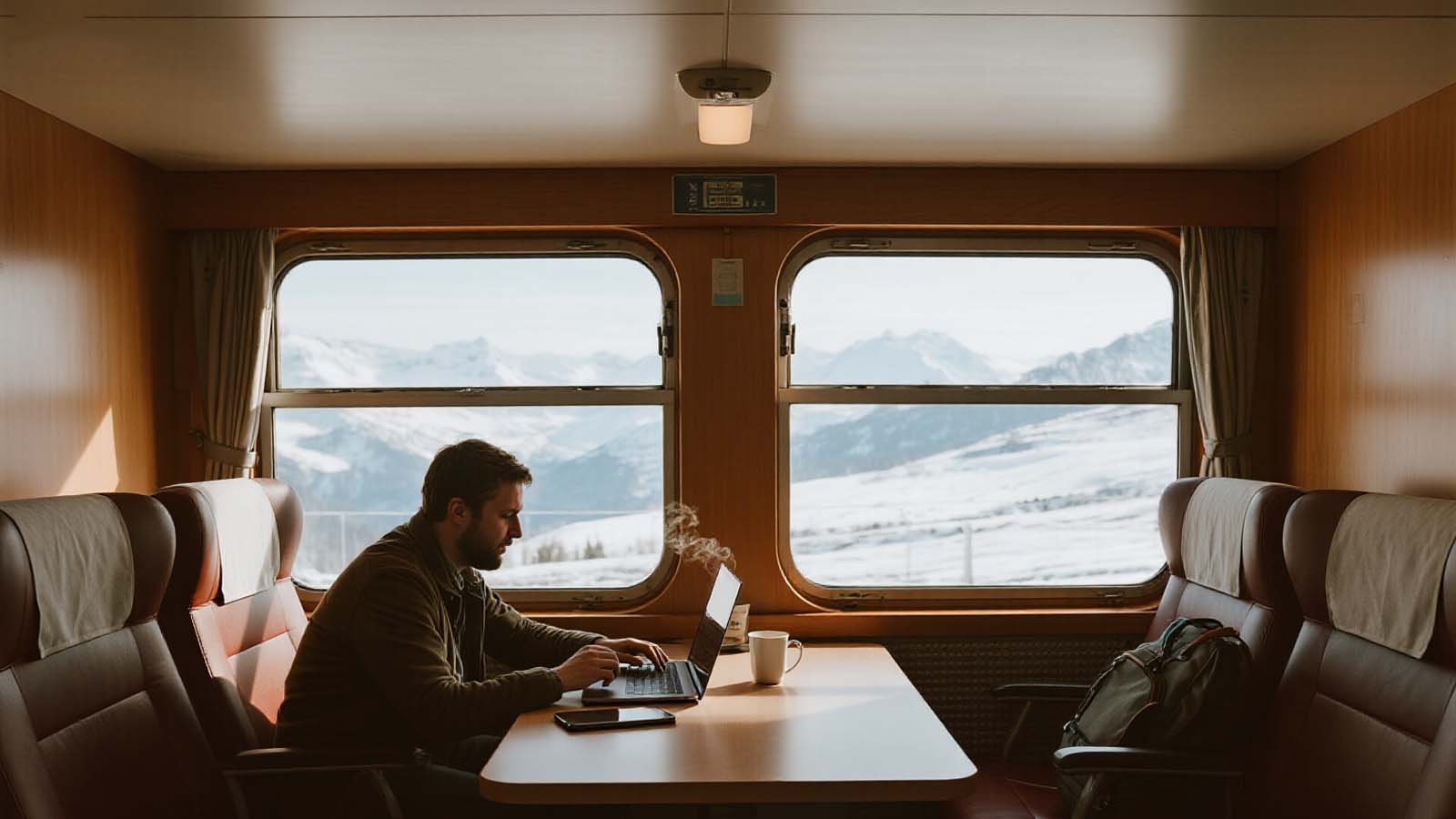
Sample “train office” packing list (carry-on friendly)
- Power & charging: compact power strip or multiport USB charger, power bank ≤20,000 mAh, universal adapter.
- Devices: tablet + Bluetooth keyboard (primary), laptop (optional), phone, earbuds/noise-canceling headphones.
- Organization: cable roll, portable mouse, SD card (if using camera).
- Comfort: refillable bottle, scarf/blanket, small snack pack.
- Security: backpack with side charging port + luggage strap, anti-theft pocket, RFID sleeve for passport/cards.
- Extras: quick-dry towel, compact umbrella, travel insurance docs/access.
Quick tips to maximize onboard productivity
- Book a table-seat if possible. It’s easier to spread devices and notes.
- Charge before you board — many trains have spotty coverage; start with full batteries.
- Offline mode is your friend: download maps, streaming files, and work documents ahead of time.
- Split work blocks: alternate focused 45-minute sprints with quick window breaks — alpine views are the reward, not the distraction.
- Respect others: keep calls short or use a quiet car.
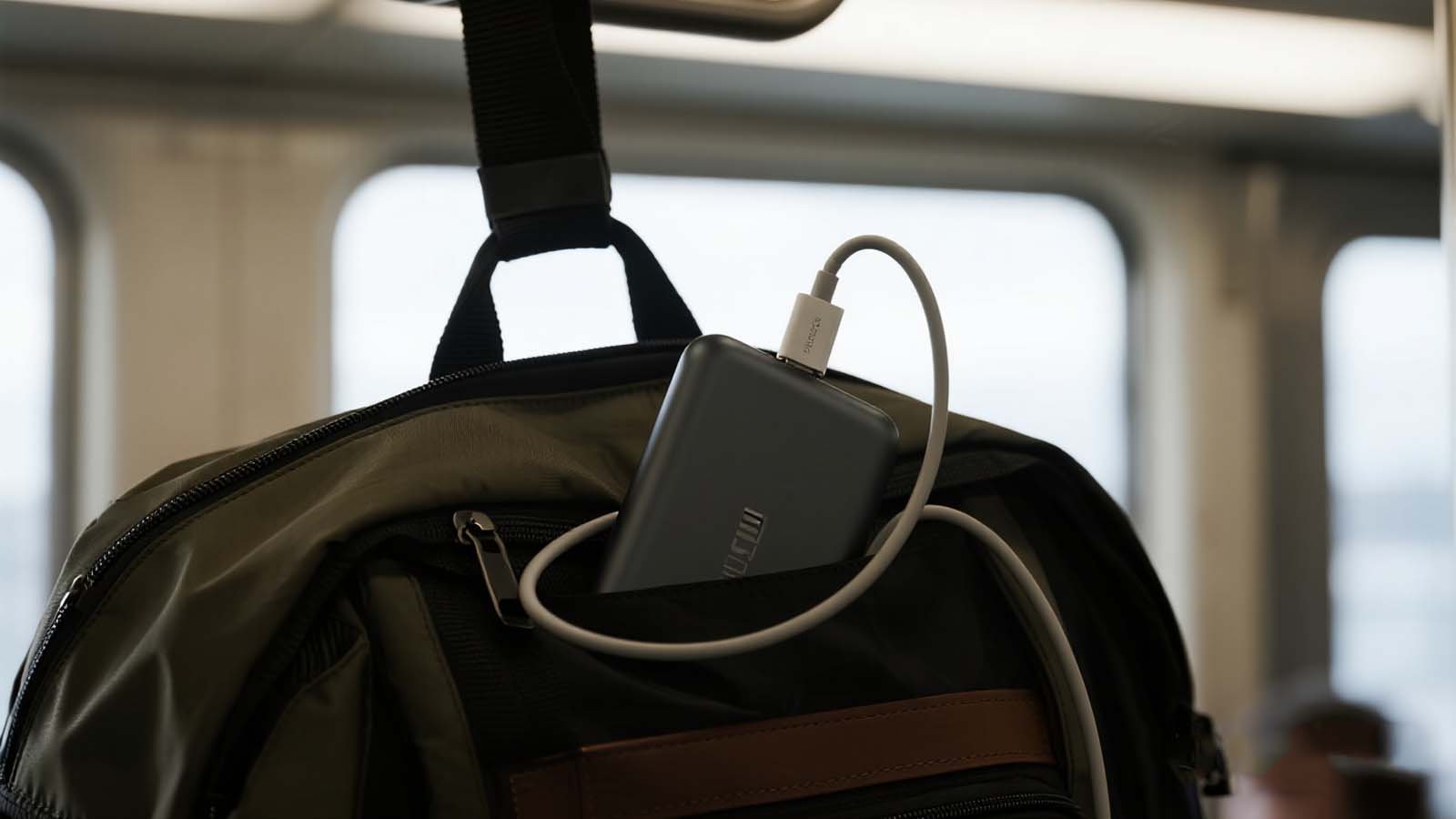
Wrap: pack smart, work scenic
Trains turn travel time into productive, comfortable sessions if you bring the right kit: a compact power strategy, a tablet + keyboard combo for lightweight work, a backpack with a side charging port and luggage strap to secure gear, and a few creature comforts. From Eurostar’s seat sockets and free Wi-Fi on many routes to scenic workations like the Glacier Express, Europe’s rails offer an unbeatable mix of connectivity and views — pack smart and your next carriage becomes an office with a better commute.



